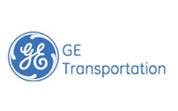Press Releases # News feeds 27
August 09, 2011
IEM Advances Thermal Imaging for Transportation Safety and Security Applications
All objects emit thermal radiation. In recent years the availability of affordable imaging sensors and cameras capable of detecting and measuring this radiation has made it possible to use thermal imaging in a variety of transportation related applications. International Electronic Machines Corporation, a Troy, NY based firm focusing on transportation safety and security solutions, developed a suite of products that leverage current and emerging infrared technology. Built upon a portfolio of patents and pending-patents, IEM’s thermal imaging technologies offer a variety of benefits to our customers.
Commercial Motor Vehicle Inspection
Safety inspections of commercial motor vehicles require trained inspectors and take close to an hour per vehicle to complete. With literally tens of millions of CMV’s on the highways, safety inspection requires screening. For many years, inspectors realized that use of infrared thermometers and even handheld thermal cameras could be used to prescreen vehicles. While these tools positively affect the selection of vehicles for inspection, they require dedicated inspectors to operate and rely on very limited information from one wheel or one side of the vehicle.
What was needed was an automated means for applying thermal imaging to CMV inspection. Between 2006 and 2009, IEM worked with Federal and state government agencies to develop SIRIS™, the world’s first Smart Infrared Inspection System. The SIRIS™ patent-pending design uses a pair of thermal cameras to capture images of each wheel as the vehicle passes. SIRIS automatically evaluates temperature data from these images to screen the vehicle for possible issues with brakes, tires, or bearings. When SIRIS™ detects a problem, it alerts inspectors via a simple user interface that enables a fast determination of whether the flagged vehicle requires more thorough inspection.
Currently installed at a weigh station in Tennessee, SIRIS™ has helped officers screen vehicles since 2009. In a 2011 study conducted by Oak Ridge National Laboratories and published by FMCSA, SIRIS™ proved to be an effective prescreening tool. Results of a blind test demonstrated that more than 80% of vehicles flagged by SIRIS™ had problems with brakes, tires, or bearings, compared to only about 35% using current screening methods.
Today, SIRIS™ remains the first and only third-party validated thermal inspection system for CMV inspection. Unlike predecessor technologies, SIRIS™ does not require a dedicated operator, thus freeing inspectors for what they were trained for: inspecting vehicles. By evaluating thermal information from the entire vehicle as a unit, SIRIS™ has proven its reliability as a screening tool. These benefits add up to a simple conclusion: SIRIS™ offers improved CMV safety inspections without adding to overall costs.
Railroad Wheel Inspection
IEM has taken the core ideas used in the development of SIRIS™ and applied them to similar concerns in the railroad and rail transit industry. Two areas critical for rail application are wheel temperature, which indicates whether or not brakes function properly, and bearing temperature, a critically important concern for rail operators. SIRIS for Rail™, currently deployed on railways throughout the U.S., records thermal images of wheels and extracts temperature information from areas of interest. The detailed thermal imaging provides in-depth understanding of brake performance. Depending on the conditions, a hot wheel may be expected and cold wheel would generate a flag; while under other conditions, a hot wheel may indicate a stuck brake requiring attention. With respect to bearing condition, use of thermal imaging technology results in virtually no false positives, a problem that plagues railroads relying strictly on current state of the art hot box detectors.
High Speed Thermal Imaging
Current infrared sensing technology has one important limitation: speed. Affordable sensors and cameras often limit the vehicles being inspected to low speeds to reduce blurring. IEM leads advanced research and development activity aimed at extending the benefits of smart infrared inspection to vehicles traveling at much higher speeds. With continued support from government and industry, IEM has identified a range of emerging technologies that will allow future versions of both SIRIS™ and SIRIS for Rail™ to inspect vehicles at speeds in excess of 100 miles per hour.
Future Development
Currently, IEM looks for solutions to serious safety issues, including grade crossing safety, bus fires, and advanced hot box detection for trains. Through development of patent-pending high speed infrared cameras, use of multispectral image fusion, and analytic software capable of extracting and analyzing temperature data, IEM remains on the forefront of this exciting technological wave. We will be demonstrating our latest technologies at Railway Interchange Sept. 18th-21st (Booth # 3351) and at APTA Expo 2011 (Booth # 5443). Come visit us to learn about our latest innovations.
About IEM
IEM develops, produces, and markets innovative imaging, optical, and other sensor based systems for safety and security applications in the intelligent transportation system industry. By combining innovative sensor systems with advanced software, IEM creates intelligent solutions for use in vehicle inspection, security monitoring, maintenance activities, and more. IEM hold multiple patents covering a wide range of technologies including advanced machine vision, non-destructive evaluation, thermal infrared inspection, innovative cameras, security monitoring, and wireless sensors and sensor networks.
July 17, 2011
Troy, NY
International Electronic Machines Corporation, a leader in the development of safety and security solutions for the transportation industry, announces the sale of its new Miniature Electronic Wheel Gauges to CSX Transportation of Jacksonville, Florida. This Mini-EWG allows railroads to efficiently manage their wheel measurement requirements. Using the Mini-EWG, users can easily measure critical wheel metrics, including flange thickness, flange height, rim thickness, and reference groove.
IEM’s original Electronic Wheel Gauge, released in 1987, is used by all Class I railroads in the US and by major railroads around the world. The original Electronic Wheel Gauge remains the only electronic measurements tool certified for use in wheel measurement by the American Association of Railroads. The new Mini-EWG advances measurement technology and offers the following significant improvements.
Smaller Size. The Mini-EWG is notably smaller than the original gauge and comparable to the AAR standard wheel gauge. The small size allows one-handed use.
Light Weight. The Mini-EWG weighs less than two pounds making it easily portable in field use.
Integrated. The Mini-EWG has integrated the controller functions, sensor, keypad, and LCD screen within the gauge itself thereby eliminating a need to carry a separate controller tethered to the gauge by a cable.
User Defined Wheel Characteristics. The Mini-EWG allows the user to set up to three custom fields for wheel characteristics.
Versatile. The Mini-EWG can measure any rail-based wheels.
Wireless Data Transmission. Data can be uploaded for analysis by direct either Infrared or radio signals.
CSX Transportation plans to distribute the IEM gauges across numerous facilities.
About IEM:
IEM develops, produces, and markets innovative imaging, optical, and other sensor based systems for safety and security applications in the intelligent transportation system industry. By combining innovative sensor systems with advanced software, IEM creates intelligent solutions for use in vehicle inspection, security monitoring, maintenance activities, and more. IEM hold multiple patents covering a wide range of technologies including advanced machine vision, non-destructive evaluation, thermal infrared inspection, innovative cameras, security monitoring, and wireless sensors and sensor networks.
Oct. 12, 2011
Troy, NY
IEM develops a smart-video based method for detecting, tracking, and identifying potential intrusions into the grade-crossing region
The majority of lethal train accidents occur at grade crossings, where the rail intersects with a public road or street. Many of these accidents are the result of deliberate action on the part of pedestrians or drivers who ignore signals and even evade barriers placed in their way. Eliminating the problem by eliminating the grade crossings is far too expensive, as creating an over or underpass costs millions of dollars and there are hundreds of thousands of grade crossings.
The alternative is to find a way to warn the train and/or authorities when something is blocking the track or remains in the area of the track too long. Initially with the support of the New York State Energy Research and Development Authority, and now under contract to the Federal Railway Administration, IEM developed a smart-video based method for detecting, tracking, and identifying potential intrusions into the grade-crossing region.
The initial work led to, and later work leverages from, our NASA project for aircraft security that resulted in our U.S. Patent 7,355,508 (System and Method for Monitoring an Area). The Smart Grade Crossing Monitor uses multisensor fusion to perform reliable detection of targets and discriminate between actual targets of interest (people, bicycles, cars, etc.) and distracters (small animals, blowing papers, shadows, and so on). Testing of the current prototype on a real roadway with simulated railway intersection demonstrated that the combined approach missed absolutely no intrusions by relevant targets, even though the analysis of the individual methods could, and did, miss some intrusions.
Development of the Smart Grade Crossing Monitor continues, and IEM expects to demonstrate and begin marketing of this new and exciting product in the next few months.
About IEM:
IEM develops, produces, and markets innovative imaging, optical, and other sensor based systems for safety and security applications in the intelligent transportation system industry. By combining innovative sensor systems with advanced software, IEM creates intelligent solutions for use in vehicle inspection, security monitoring, maintenance activities, and more. IEM hold multiple patents covering a wide range of technologies including advanced machine vision, non-destructive evaluation, thermal infrared inspection, innovative cameras, security monitoring, and wireless sensors and sensor networks.
July 25, 2011
“Smart” Technology Provides Cost-Effective Solution to Improve Highway Safety
An innovative and cost-effective approach to helping public safety officials prevent trucking accidents is currently under development. The U.S. Department of Transportation’s Federal Motor Carrier Safety Administration is funding a two year project to develop a system that will detect potentially serious problems in the brakes and wheels of tractor-trailers from heat sensitive infrared images. The Smart Infra-Red Inspection System (SIRISÔ) is being developed by International Electronic Machines Corp. (IEM – Albany, NY) and will address the limitations of current technologies in use while eliminating the excessive on-going personnel costs through automation.
Current technologies require at least one operator and can only image the wheels on one side of a vehicle, leaving the wheels on the other side uninspected by the infrared process. SIRISÔ records thermal images of all wheels on both sides of the vehicle, provides instant analysis of any potential problems, and automatically notifies the appropriate personnel with specific information including truck identification, wheel location, and both a thermal and superimposed visual image of the problem wheel(s). Brakes that are overheating, or not working at all, are readily identified as are overheated bearings and tires.
Reducing accidents is a major initiative of state and federal transportation agencies, and uncovering potentially serious problems before they result in tragedy can dramatically improve their accident reduction efforts. SIRISÔ can boost those efforts with leading technologies in an affordable, cost-effective manner.
About IEM:
IEM develops, produces, and markets innovative imaging, optical, and other sensor based systems for safety and security applications in the intelligent transportation system industry. By combining innovative sensor systems with advanced software, IEM creates intelligent solutions for use in vehicle inspection, security monitoring, maintenance activities, and more. IEM hold multiple patents covering a wide range of technologies including advanced machine vision, non-destructive evaluation, thermal infrared inspection, innovative cameras, security monitoring, and wireless sensors and sensor networks.
IEM Announces the Completed Installation of the Most Technically Advanced Supersite
International Electronic Machines Corporation (IEM) is pleased to announce the completed installation of its High Speed Supersite in Voorheesville, NY. IEM’s system will detect, measure, evaluate, and flag rail wheel sets as they move through the site at speeds up to 80 miles per hour. The Voorheesville Supersite includes seven systems; profile, diameter, brake pads, bearings, hot box detector, truck performance, and hot wheel detector. It is considered to be the most technically advanced Supersite installed to date.
About IEM
IEM develops, produces, and markets innovative imaging, optical, and other sensor based systems for safety and security applications in the intelligent transportation system industry. By combining innovative sensor systems with advanced software, IEM creates intelligent solutions for use in vehicle inspection, security monitoring, maintenance activities, and more. IEM hold multiple patents covering a wide range of technologies including advanced machine vision, non-destructive evaluation, thermal infrared inspection, innovative cameras, security monitoring, and wireless sensors and sensor networks.





























